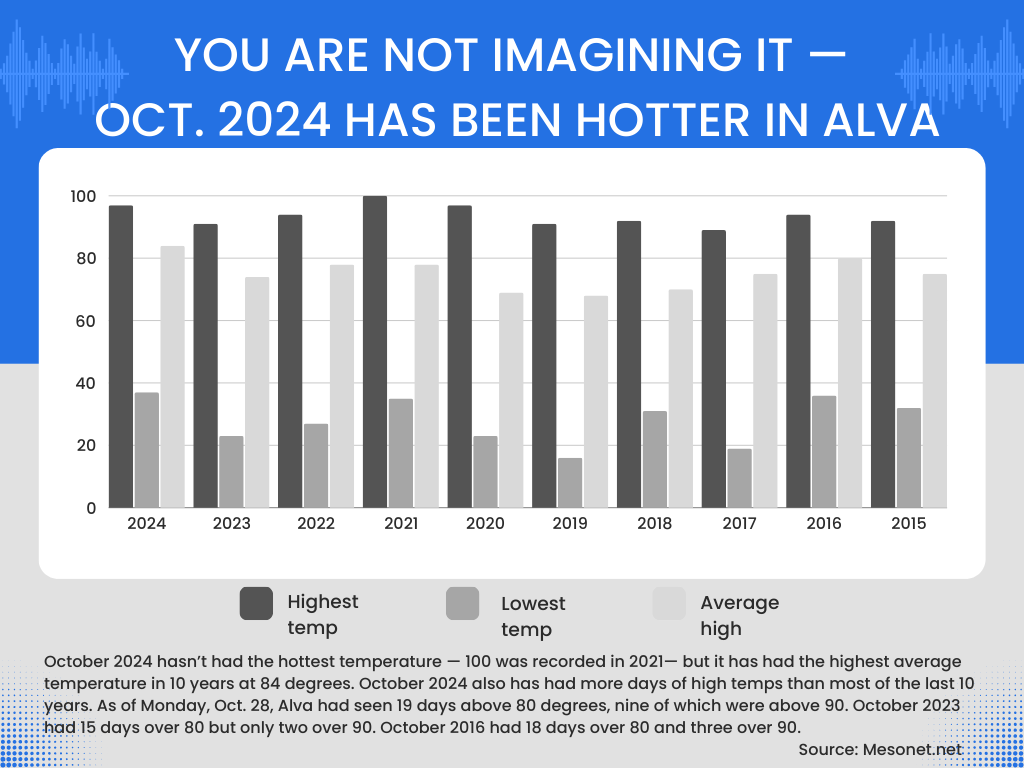
By INGRID MALDONADO, Student Reporter
The National Oceanic Atmospheric Administration predicted this winter La Niña with a warmer and drier climate in the south.
El Niño and La Niña are climate patterns in the Pacific Ocean that impact the weather worldwide, according to the NOAA.
El Niño causes the temperature of the sea near the equator to be warm and La Niña does the opposite. El Niño means “little boy,” while La Niña means “little girl.”
According to the NOOA, La Niña is going to start around September-November and will last until January-March 2025.
The northern part of the United States will be affected with wetter conditions while the southeast to southwest states will have a warmer and drier-than-normal conditions.
La Niña is predicted by the Climate Prediction Center to be weak and short resulting in low winter impacts.
This means a few blizzards and storms, but a dry climate. Oklahoma will likely have a below-average dry winter season.
“Famously, if you look back through the last 50 years or so when we have these La Niña’s, they tend to be drought starters,” said state climatologist, Gary McManus.
According to NOAA past La Niña winters resulted in rough droughts in California and the southwest. El Niño or La Niña impacts the daily weather.
The panhandle recently experienced a record-breaking rainfall.
Then there are the hurricanes as well.
La Niña will affect Oklahoma with the drier climate which will lead into harvest next year.
That will greatly impact agriculture in Oklahoma. McManus urges producers to plan for the dry weather that will be caused by La Niña. Besides NOAA, the Old-Farmer’s Almanac predicts a warmer than usual winter.
Their newest edition informs of snow in February. Both NOAA and the Old Farmer’s Almanac believe this winter to be warmer than usual and dry.
Students that are from the north will have a harsher winter with more precipitation while those from down south will have a warmer drier winter. Students will be glad to know that there is not a big chance of snowstorms happening before winter break.
